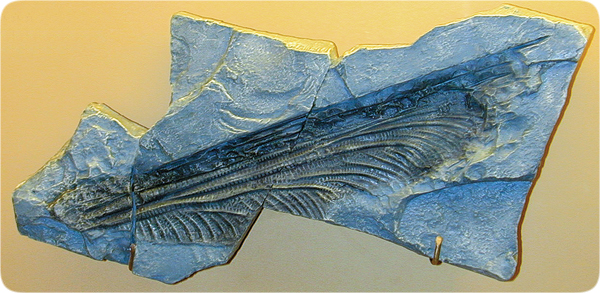Below is the online edition of In the Beginning: Compelling Evidence for Creation and the Flood,
by Dr. Walt Brown. Copyright © Center for Scientific Creation. All rights reserved.
Click here to order the hardbound 8th edition (2008) and other materials.
21. Rapid Burial
Fossils all over the world show evidence of rapid burial. Many fossils, such as fossilized jellyfish,a show by the details of their soft, fleshy portionsb that they were buried rapidly, before they could decay. (Normally, dead animals and plants quickly decompose.) The presence of fossilized remains of many other animals, buried in mass graves and lying in twisted and contorted positions, suggests violent and rapid burials over large areas.c These observations, plus the occurrence of compressed fossils and fossils that cut across two or more layers of sedimentary rock, are strong evidence that the sediments encasing these fossils were deposited rapidly—not over hundreds of millions of years. Furthermore, almost all sediments that formed today’s rocks were sorted by water. The worldwide fossil record is, therefore, evidence of rapid death and burial of animal and plant life by a worldwide, catastrophic flood. The fossil record is not evidence of slow change or evolution.d [See "A Whale of a Tale" on page 137.]

Figure 7: Fossil of Fish Swallowing Fish. Burial and fossilization must have been quite rapid to have preserved a fish in the act of swallowing another fish. Thousands of such fossils have been found.

Figure 8: Fish in Long Fish. In the belly of the above 14-foot-long fish is a smaller fish, presumably the big fish’s breakfast. Because digestion is rapid, fossilization must have been even more so.

Figure 9: Fish in Curved Fish. The curved back shows that this 3-meter-long fish, Xiphactinus, died under stress. Inside it is a 1-meter-long fish.

Figure 10: Dragonfly Wing. This delicate, 1 1/2-foot-long wing must have been buried rapidly and evenly to preserve its details. Imagine the size of the entire dragonfly!